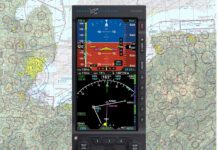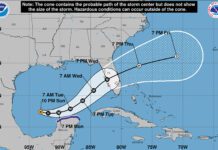I’ve been attending the annual U.S. Sport Aviation Expo for the last few years. It’s held in Sebring, Fla., in late January, and features the latest and greatest found in the light sport aircraft (LSA) market from around the world. It’s a much smaller show than the Experimental Aircraft Association’s annual extravaganza in Oshkosh, Wis., or even the Lakeland, Fla, Sun ‘n Fun fly-in. That’s okay, because it’s also much more accessible. This year’s event was no different: It afforded attendees the opportunity to perform an up-close-and-personal check on the LSA industry’s pulse.

288
Yes, the 2012 Expo featured fewer exhibitors than previous years. That’s to be expected, as both overall economic conditions and the “natural selection” of a maturing market have had an impact. Still, the usual suspects were present, and most airframers brought with them proof they have upgraded features, models or both since last year.
Avionics continues to be a dynamic market segment for this aircraft class, with several new products being displayed, plus updated capabilities for existing ones. If nothing else, the kinds of panel-mounted and portable technologies available for the LSA and experimental markets highlights the steep hurdles FAA certification requirements can pose.
New developments in engines and airframes take longer and cost more, of course, so those were fewer in number. To me, the most interesting part of the show, however, is the huge variety of LSAs, which includes powered parachutes, Piper Cub clones, gyrocopters and some very slick fixed-wing designs from overseas and the U.S. In my view, there is a wider variety of aircraft types presented in a smaller setting at Sebring than at any other event of its kind. That’s something for which it’s worth escaping the office, or spending a sunny Saturday.
Yes, the number of exhibitors was down this year, but attendance was up: There were some 16,000 visitors for the four-day event, according to organizers, breaking previous records. And from our informal survey, exhibitors reported attendees seemed more likely to buy aircraft and related products at this year’s show than in previous years. That’s important, since it could be the first indicator that the slumping U.S. general aviation industry may start picking up again this year.
The only gripe I have with the show doesn’t involve its organization or content but some of the attendees who flew in. Too many of them clearly were unprepared for the event, which included 3434 flight operations. The FAA published a Notam detailing arrival and departure procedures but—surprise!—there always seems to be a few knuckleheads who think the rules shouldn’t apply to them, or who didn’t bother to do any pre-flight planning. It is always so at most any similar fly-in event.
One of these days, the pilots who fly in might be as sophisticated as the products on display, but I’m not holding my breath.
—Jeb Burnside



